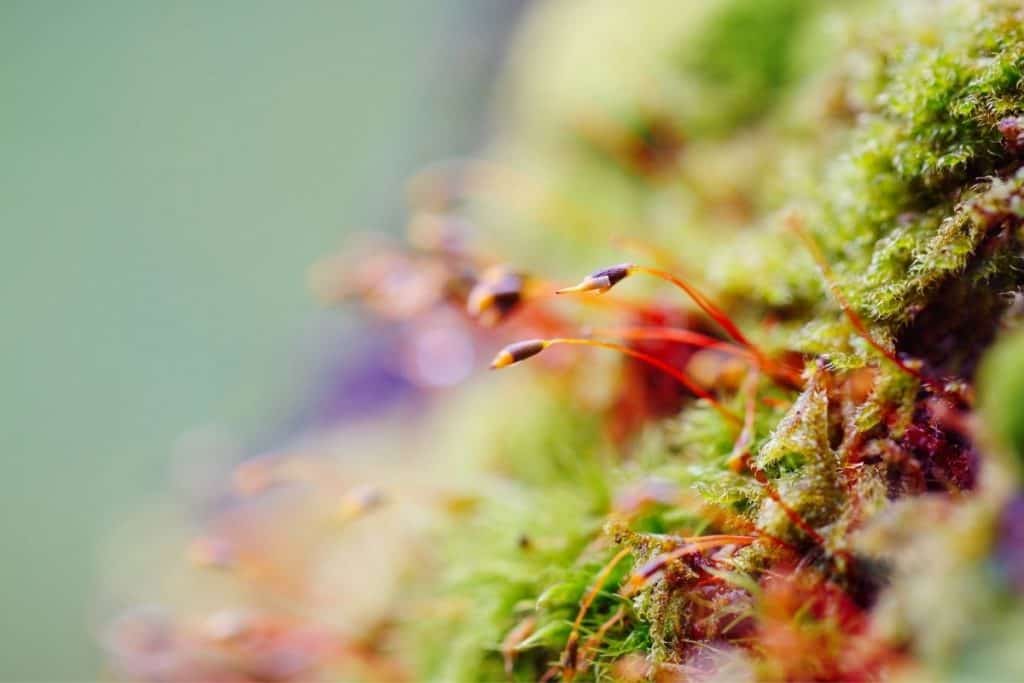How Does Moss Reproduce? Moss is a fascinating plant that can be found almost anywhere in the world. It can be found on logs, tree trunks, branches, soil, and rocks. It can grow in clumps or patches, and its colors range from light green to deep olive green.
To some people, moss can be annoying, as it seems to take over any area it is in and can spread to other areas very quickly. However, mosses can do this because of the way it reproduces.
Unlike most plants, moss does not use seeds to reproduce. Instead, it uses spores and this can be a real problem if you live in an area with a lot of moss. So let’s go over how moss reproduces and how you can get rid of it if it’s becoming a problem.
How Does Moss Reproduce Asexually?
- Fragmentation: There are several ways that mosses can reproduce asexually. One way is by fragmentation. Fragmentation happens when a piece of moss (spores) breaks off from the main body and grows into a new plant.
- Additionally, the wind can help to distribute spores more widespread, which increases the chances that at least some of them will take root. As a result, windy conditions can actually be perfect for Moss’s growth.
- Gemmae Production: Another way mosses can reproduce asexually is by gemmae production. Gemmae are small, bulb-like structures that form on the tips of stems or leaves. Gemmae can detach from the plant and start new colonies.
- However, when the spore breaks away they don’t form new plants immediately. Instead, they grow into ‘protonema thin branch (Rhizoids) which will eventually grow leaves and buds.
How Does Moss Reproduce Sexually?
- Gametophyte: The moss plant that is produced from sexual reproduction is called a gametophyte. The gametophyte is the dominant phase in the life cycle of mosses. It produces both the male and female sex organs.
- The male structures of the moss plant (antheridia) are what produce sperm cells. The female part of the plant (archegonia) produces the egg cells this is where (moss spores) are formed.
- Sporophytes: When the sperm cells and egg cells meet, they form a zygote. The zygote remains inside the (archegonia) and will undergo several cell divisions, resulting in the development of embryonic sporophytes.
- Sexual reproduction is not as common in mosses as asexual reproduction, but it does occur!
What Does Moss Require For Fertilization?
Water
The moss has a protective, structure called the calyptra that encases each embryo. When the moss takes on water, absorbing minerals, and nutrients from the gametophyte, the sporophyte will start to grow in size.
Water is a very important part of the fertilization process for moss. The calyptra helps to keep the embryos moist and allows them to absorb the water and minerals they need to grow.
Without water, fertilization cannot take place!
Sunlight
Apart from water, Mosses also require partial sunlight to conduct what’s called photosynthesis. Photosynthesis is the process that helps to create glucose from light, water, and carbon dioxide.
Mosses will need to get at least some partial sunlight in order to complete photosynthesis and help with the growth of the sporophyte!

Why Does Moss Need To Reproduce?
Like Most Plants, mosses need to reproduce in order to create new plants. By reproducing, they are able to spread to new areas and create new colonies. Additionally, reproduction helps them to ensure the survival of their species.
Can You Stop Moss From Reproducing?
One of the most common questions asked about moss is whether or not it can be stopped from reproducing and spreading. Unfortunately, there is no definitive answer to this question.
While there are a number of products on the market that claim to prevent moss reproduction, their effectiveness has not been scientifically proven.
Some gardeners believe that adding lime to the soil will make it less hospitable for moss, but again, there is no concrete evidence to support this claim.
In the end, the best way to deal with moss may be to simply use moss killer or some other means to remove it.
Other Ways It Can Spread?
As we mentioned before, the wind can help to distribute spores more widespread. Additionally, animals can also help to spread moss spores to other areas.
For example, when an animal walks through an area with moss, it can pick up spores on its feet or feathers. These spores will then be dropped off in other areas as the animal moves around.
Mosses can also attach themselves to animals (such as birds) and be transported to other areas this way.
Humans can also inadvertently help to spread moss spores! For example, if you have Moss in your yard and you move firewood around, you could be moving Moss spores to other areas of your property (or even to your neighbor’s yard!).
Final Thoughts
So there you have it! Everything you need to know about how moss reproduces. Although it is very different than most plants, mosses still have some of the same needs in order to reproduce successfully.
Moss reproduction is an interesting process that helps to keep the moss population diverse and thriving. The next time you are out in nature, take a closer look at the moss and see if you can spot the different stages of its life cycle!
You May Also Like To Read: